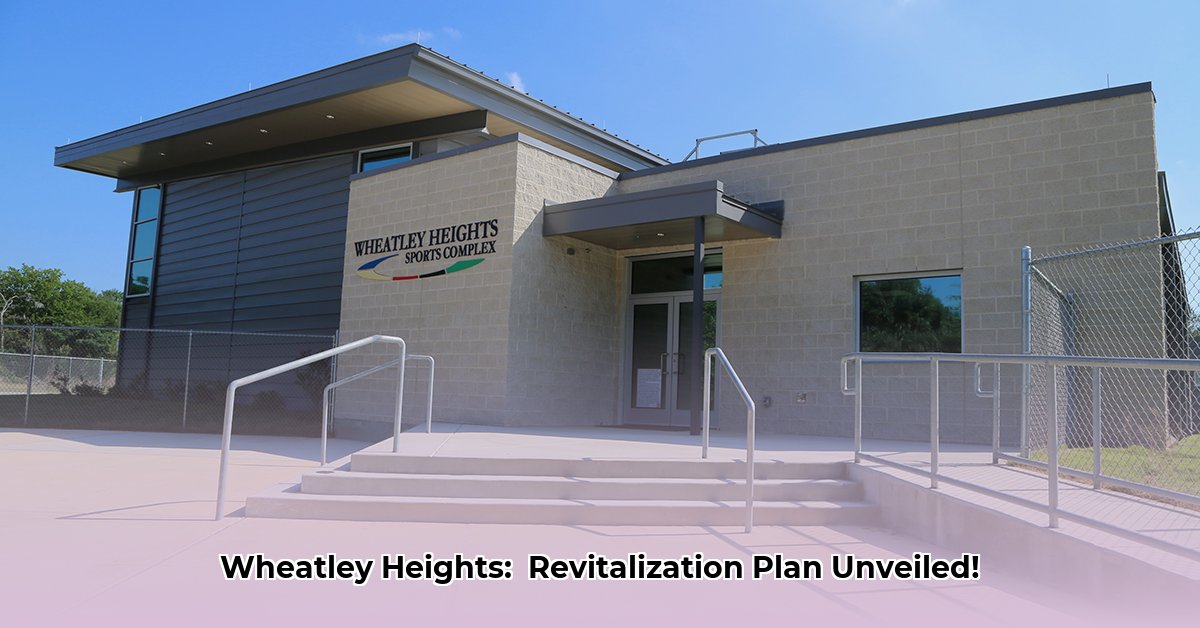
Assessing the Current State of Wheatley Heights Sports Complex
The Wheatley Heights Sports Complex, located within the vibrant Martin Luther King Park in San Antonio, possesses significant untapped potential. However, a comprehensive revitalization requires a data-driven approach to address current deficiencies and maximize its community impact. Currently, a lack of detailed information hinders the development of a fully optimized strategic plan. This report outlines a phased approach to gather essential data and implement actionable improvements, transforming the complex into a thriving community hub. This plan prioritizes community engagement and long-term sustainability.
Gathering Essential Data: A Foundation for Success
Before embarking on a revitalization plan, we must gather crucial information to inform effective decision-making. This involves a multi-pronged approach:
1. Community Needs Assessment
Understanding community needs is paramount. This requires a thorough assessment of current usage patterns and desired activities. This will involve:
- Community Surveys: Targeted surveys will gauge community preferences regarding sports, recreational activities, and desired amenities. This will help determine the optimum programming to ensure maximum usage and appeal.
- Focus Groups: Facilitated discussions with diverse community members will provide valuable qualitative insights, capturing nuanced opinions and unmet needs.
- Stakeholder Interviews: Key stakeholders, including residents, local businesses, and community organizations, will be interviewed to gain a comprehensive understanding of their perspectives and future aspirations.
2. Facility Condition Assessment
A detailed assessment of the complex's physical condition is crucial. This will encompass:
- Structural Integrity: A thorough inspection to identify structural issues, including damage to buildings, fields, and other infrastructure.
- Equipment Functionality: An evaluation of the condition of existing equipment, including sports equipment, playground facilities and lighting.
- Safety Audit: A comprehensive safety audit to identify and address potential hazards to ensure the safe utilization of the complex by all user groups.
3. Financial Resource Inventory
A clear understanding of the complex's financial standing is essential:
- Current Funding Sources: Identification of current funding sources, including city budgets, grants, and sponsorships.
- Revenue Streams: Evaluation of current and potential revenue streams, such as facility rentals, program fees, and sponsorships.
- Budgetary Constraints: A realistic assessment of budgetary constraints and their implications for potential improvements and expansions.
A Phased Approach to Revitalization: Actionable Steps
Based on the data gathered, a phased approach will guide the revitalization process, ensuring efficient resource allocation and enabling the celebration of early successes.
Phase 1: Immediate Improvements (0-12 Months)
- Complete Needs Assessments: Conduct all assessments described above to establish a firm understanding of the complex's current state and community expectations. (Efficacy Metric: 100% completion of all assessments)
- Address Urgent Repairs: Prioritize immediate repairs to address safety concerns and improve the overall aesthetic appeal of the complex. (Efficacy Metric: Reduction of identified safety hazards by 90%)
- Launch Community Engagement Initiatives: Begin community engagement strategies, including surveys and initial focus groups, to foster early collaboration and build excitement. (Efficacy Metric: 50% community participation in initial engagement activities)
Phase 2: Strategic Upgrades (13-36 Months)
- Secure Additional Funding: Actively pursue grants, sponsorships, and fundraising opportunities to secure the resources necessary for larger-scale upgrades. (Efficacy Metric: Secure 75% of projected funding needs)
- Implement Infrastructure Upgrades: Prioritize and execute infrastructure upgrades based on the assessment findings. This would include facility repairs, equipment replacement, and improved accessibility. (Efficacy Metric: Completion of 80% of prioritized infrastructure upgrades)
- Expand Programming: Implement enhanced programming based on community feedback, introducing a diverse range of activities to attract a wider audience. (Efficacy Metric: 20% increase in facility usage)
- Establish Partnerships: Develop strong partnerships with local businesses, schools, and community organizations to foster mutual support and increase resource availability. (Efficacy Metric: Establish at least 5 key partnerships)
Phase 3: Long-Term Sustainability (37+ Months)
- Expand Facility (Conditional): Consider expanding the complex based on community demand and funding availability. This could include the addition of new fields, courts, or community spaces. (Efficacy Metric: Successful completion of expansion if undertaken)
- Implement a Sustainability Plan: Develop and implement an environmentally sustainable plan to maintain the complex’s value and minimize environmental impact. (Efficacy Metric: Reduction of 15% in utility costs)
- Establish Ongoing Evaluation: Implement a system for continuous evaluation to measure the effectiveness of programs, assess community satisfaction, and inform future development. (Efficacy Metric: Annual community satisfaction surveys with 70% participation)
- Assess Economic Impact: Track and analyze the complex’s economic impact on the local community. (Efficacy Metric: Quarterly economic impact reports)
Conclusion: Building a Thriving Community Asset
The revitalization of the Wheatley Heights Sports Complex presents a unique opportunity to create a thriving community asset. By adopting a data-driven approach, fostering strong community partnerships, and implementing a phased revitalization strategy, we can transform the complex into a vibrant hub that serves the needs of the entire community. This is not merely a project; it is an investment in the future, strengthening the social fabric and economic vitality of East San Antonio.